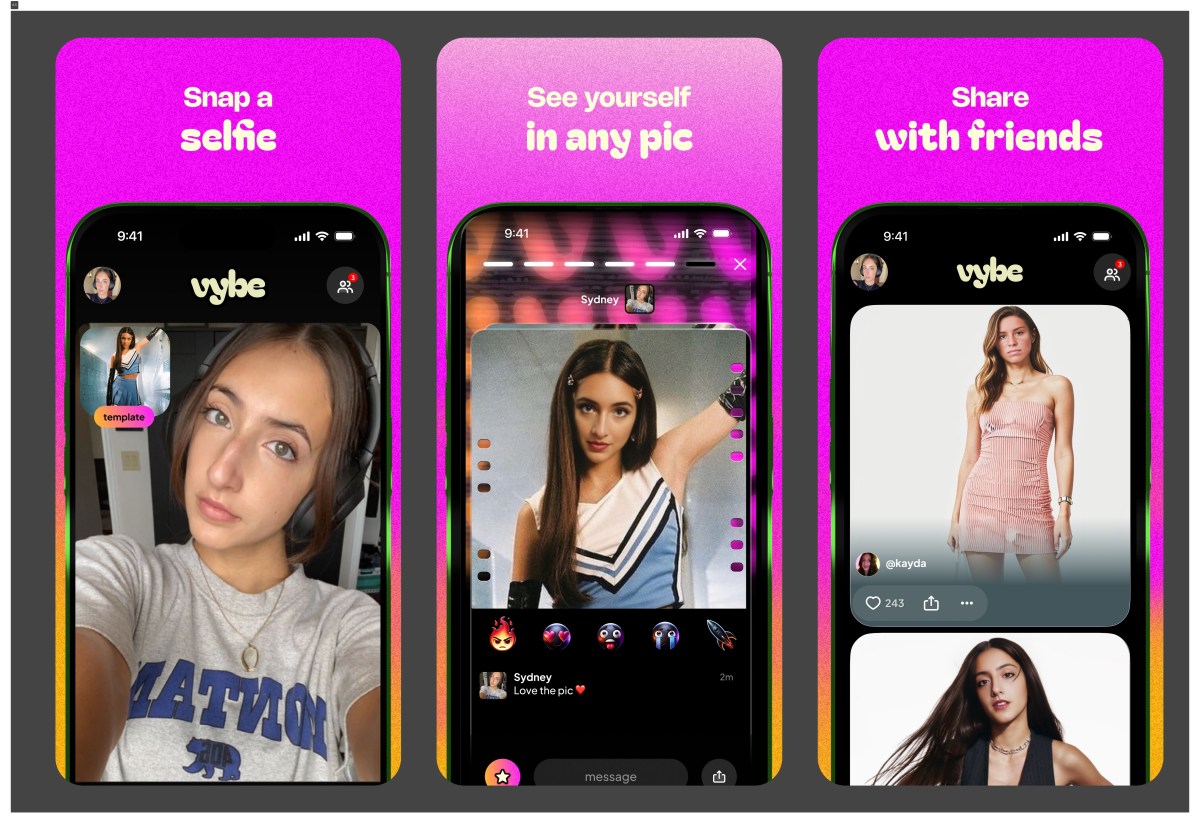Earlier this month, Google released a new feature with the Pixel 9 series phone to let users add the photographer in the group photo by swapping someone out and taking another photo. A new social network by a duo of Oxford PhDs is working on an app to let you add friends to a photo in a more memeable and fun way.
Vybe is a mobile app, which lets you upload a selfie and put your face in any picture or an existing template. It also swaps faces of you and your friends in a picture with multiple people. The tools also change the skin tone of the person in the template based on your skin tone so there is no mismatch between face and the rest of the body.
Users can see photos created by their friends in a feed and upload their own templates too. The startup thinks that this will nudge more people to create content on the platform. Vybe said it has more than 100,000 user-generated templates, with the number growing quickly because it requires little effort to create a template.
The company has built a social network around this to encourage people to connect more. While this is the core proposition now, the startup wants to build more photo and video related tools combining social, AR, and generative AI.
Vybe has raised $4.75 million in seed funding in a round led by Stellation Capital with support from Scribble Ventures, Coalition Operators, Neo, and Blueprint FTC. Plus, individuals such as NFL player Kelvin Beachum, early investors in Facebook and Uber, Ali Partovi, and OpenAI’s chief product officer, Kevin Weil contributed to the round.
The company is founded by two Oxford PhDs, Dr. Mandela Patrick and Dr. Arnab Ghosh, who went to work at Meta and Snap, respectively. Patrick’s research focused on multi-modal AI video and image understanding. Later, he worked on core AI algorithms for Instagram Reels. Meanwhile, Ghosh researched on generative models for image rendering. He worked at Snap on launching gen AI features like Bitmoji background.
The co-founders said that they wanted to build a social product that has a network effect value. They also believe that there is value in creating a one-click tool for actions — such as placing faces of you and your friends in a photo — that used to require a long time.
“When I was at Snap, I saw how little details can make a difference in adoption. While Photoshop was available for years, Snap allowed users to have different experiences with Lenses at a larger scale,” Ghosh said.
While face-swapping apps such as Reface already exist, Vybe co-founders hope that the ease of creating templates and users remixing them will create a network.
“If you think about successful social products, they had a marquee format. For example, in Snapchat it was disappearing messages, and we think AI-powered photos with your friends is that format for us,” Patrick said.
The company is exploring brand partnerships, ads, and subscription revenue streams. It is also gearing up to launch features like video and animation support in the app.
Peter Boyce II, the founder of Stellion Capital believes that the founders have deep level of depths and interest in AI, which will help them figure out the platform better. He thinks that the product being simple and frictionless to use will help Vybe in becoming a hit.
“When all the technology they have worked with fades into the background and what is left is a simple, easy, and fun way to engage with different folks. And that for me is ingredients for something that become mainstream,” he told TechCrunch.
BeReal, which banked on a format of nudging people to share in real-time when they got a notification, faced issues when it comes to maintaining growth and generating revenue. The company eventually got acquired by the French mobile apps and games publisher Voodoo.
Vybe co-founders and investors believe that the company will succeed because it wants to create more formats and involve users in the creation process. But they emphasized that it’s important not to create behavior that create fatigue amongst users.
The app is available for download on iOS and Android.

